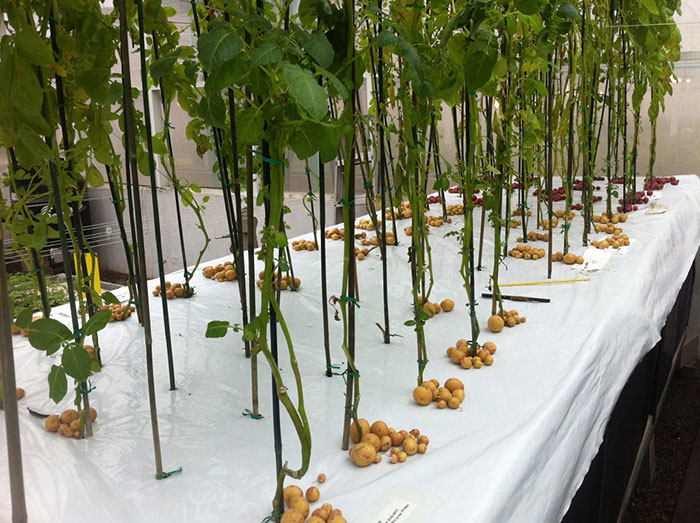
Has it ever occurred to you to grow potatoes without soil? Potatoes used to be exclusively connected with traditional farming practices and tilled soils. But thanks to advancements in technology, new techniques have been developed that let farmers and gardeners produce food in novel ways. Aeroponics is one such technique that grows plants in the air by spraying their roots with solutions rich in nutrients. This page offers useful information about growing potatoes hydroponically.
1. First, what is aquaponics?
Hydroponics that uses aeroponics suspends plants in the air and mists their roots with a nutrient solution on a regular basis. The use of aeroponics in agriculture has various benefits over conventional soil-based farming. It keeps the growing environment cleaner, promotes faster plant growth, and increases produce yield—including potatoes.
2. Essential Items
Prior to beginning aeroponic potato farming, let’s assemble the required materials:
Aeroponic System: This system is made up of plant supports, a misting system, and a tank. You have the option to build your own configuration or buy one that is already assembled.Cuttings or Potato Seed Potatoes: Pick potatoes that are disease-free and nutritious. Make sure the cuttings you use have “eyes” where shoots can sprout.Nutrient Solution: Certain minerals are necessary for potatoes to grow well. You can use nutrient solutions made for all veggies or discover ones specifically made for potatoes.pH Test Equipment and pH Adjustments: It’s critical to keep the pH at the proper level. To guarantee ideal potato growth, a pH measurement kit and solutions that can raise or lower the pH are helpful.
Net Pots: To keep the roots of potato tubers or cuttings free to grow, place them in net pots.
3. How to Air-Garden Potatoes
To grow potatoes using the aeroponic technique, take the following actions:
Setting up: Put together your aeroponic system using the guidelines or your own design.
Planting the Tubers: Make sure the eyes of a potato seed tuber or cutting are facing up when you place it in a net pot. For optimal results, if you are utilizing cuttings, select a piece that has two or three eyes.
Nutrient Solution: Make the nutrient solution as directed on the box. To verify the pH level, use a pH testing kit; the ideal pH range for potatoes is between 5.2 and 6.0. Using the included treatments, adjust the pH as needed.
Misting: To make sure the roots get enough water and nutrients, the aeroponic system will sprinkle them every day. Adapt the spraying frequency according to the system and the local climate. The roots should continue to be damp but not soggy.
Track Growth: As the potatoes get bigger, keep an eye on them. Make sure you have enough fertilizer solution on hand, and keep the pH level at a constant level.
Harvesting: The potatoes are ready to be harvested when the plants start to blossom and the foliage starts to fall back. After turning off the aeroponic system, take the potatoes out of the net pots with caution.
4. Advantages of Growing Potatoes Aeroponically
The following are some benefits of using an aeroponic system to grow potatoes:
Disease risk reduction: Because aeroponically grown potatoes aren’t exposed to soil-borne pests and pathogens, they are less vulnerable to typical potato diseases.Greater yield in constrained spaces: Aeroponic systems’ effective nutrient and air supply allow for better potato yields in constrained growth spaces.Vertical stacking: Because aeroponic devices may be stacked vertically, they are a great option for spaces that are limited, like cities.Water efficiency: Aeroponic farming is a sustainable farming method.
Although it may seem like something out of the future, it is possible to grow potatoes in the air today. Potato growth is improved with aeroponics, which also improves efficiency and water conservation. Using these cutting-edge techniques can help ensure a safer and more sustainable food production in the future as farming technology advances.